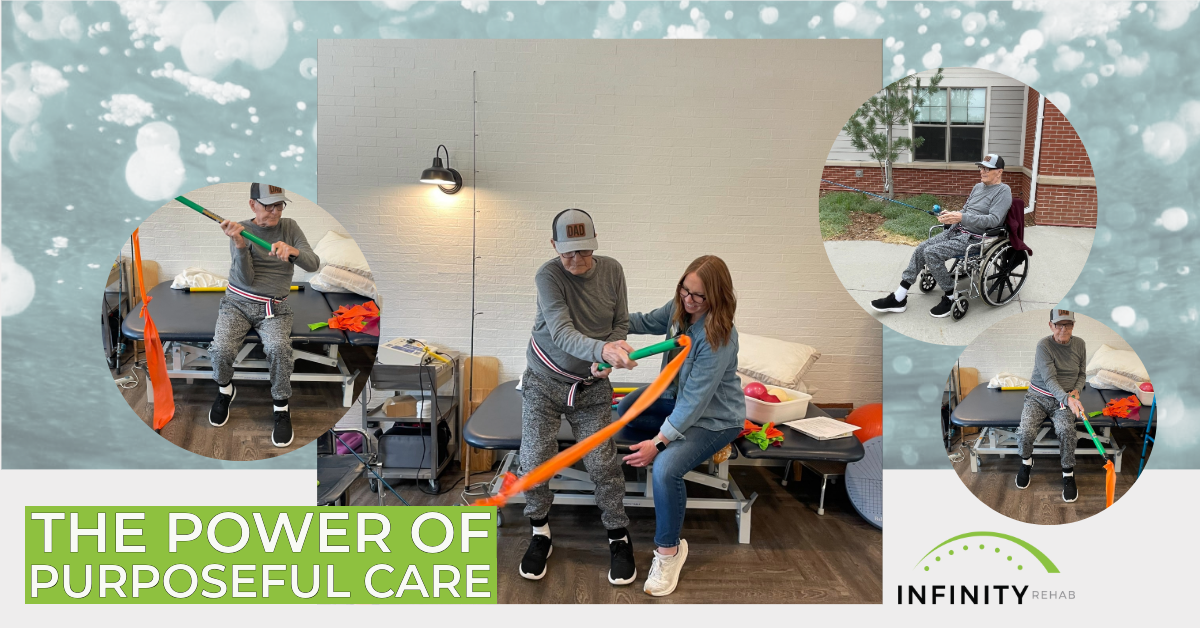We are nearly one month into 2015 and I need you to be honest. Raise your hand if you have already begun to slip on one or more of your New Year resolutions. If you are like most people, your hand is in the air. I know I’m struggling with one or two goals on my list. However, like a good Physical Therapist, I’ve written down my 2015 goals in my planner (yes, I still use a written planner) so they serve as a constant reminder to keep me on track.
As a PT, I am confident in my ability to develop goals for a patient or myself. I am also confident in my knowledge in the areas of exercise science and nutrition, the two areas around which most of my goals are based. Based on this, how could I possibly be slipping on a goal? It is because some of my goals require behavior change and behavior change is difficult for anyone at any age. Older adults are no exception. In addition, knowledge alone is a poor motivator. Think about how many times you educate your patients only to discover non-compliance.
There is growing interest in the study of health behavior change and patient engagement as a way of becoming more patient centered. Lack of compliance to a set of New Year resolutions or a home exercise program may have less to do with knowledge and motivation and more to do with a mismatch to readiness for change. The Transtheoretical Model of Behavior Change provides a framework on how people change their behavior (Nash et al., 2011). This model is rooted in Freudian, Skinnerian, and Rogerian traditions, among others – hence, the name Transtheoretical. The model allows the clinician to tailor their education to the patient’s readiness level of learning and behavior change. The following are the six stages of change along with what I would consider as a therapist attempting to implement a health promotion strategy, such as an exercise program:
Precontemplation – This person is not ready to change and does not intend to take action within the next six months.
Therapist should consider this: Patients in this stage are often under informed about the consequences of their behavior and tend to avoid reading, talking, or thinking about their high-risk behaviors. Traditional home exercise programs will not meet the needs of this group and there will be noncompliance. Education needs to be the focus.
Contemplation – This person is thinking about change and intends to start a healthy
behavior within the next six months. They are aware of the pros of behavior change, but also the cons. This group can fall into long periods of procrastination weighing the costs and benefits of behavior change.
Therapist should consider this: Patients in this stage are not ready for traditional action-oriented programs that expect participants to act immediately. The therapist needs to help them through their cost-benefit analysis of behavior change, moving them closer to the preparation stage.
Preparation – This person is ready for change and likely to take action within the next month. The patient in this stage may have already taken some action, such as spoken to their doctor about becoming more active or losing weight.
Therapist should consider this: Patients in this stage should be included in action-oriented programs. They just need that extra push. Exercise programs should be simple and designed for the patient to succeed. Overly complicated discharge plans and programs may only validate the cons and push the patient back into contemplation.
Action – This person made a behavior change in the past six months and intends to keep moving forward with that change.
Therapist should consider this: Not all modifications of behavior count as action at this stage. For example, a patient that chose an exercise program that is inappropriate for their health condition has taken action, but the wrong action. The therapist would need to modify this to avoid a potential negative outcome.
Maintenance – This patient has made specific modifications to their lifestyle and is working to prevent relapse. Researchers estimate maintenance lasts from six months to about five years. Patients are less likely to relapse at this stage, as they grow increasingly more confident that they can continue their changes.
Therapist should consider this: Five years may seem like a long time, but longitudinal studies on behavior change support this. For example, the Surgeon General’s report (1990) showed that after 12 months of continuous abstinence, 43% of individuals returned to regular smoking. It was not until 5 years of continuous abstinence that the risk for relapse dropped to 7%. Therefore, the therapist needs to reinforce the importance of maintaining an appropriate exercise program and congratulate the patient for their success thus far.
Termination – The patient at this stage is not at risk for relapse. They have 100% self-efficacy. They will not return to unhealthy habits as a way of coping with life stressors. This stage is really the goal for population health.
Therapist should consider this: In areas like exercise and weight control, the realistic goal may be a lifetime of maintenance because it may not be a practical reality for the majority of the population.
It is important to recognize that the stages are not linear and that people may regress at times. It also means that people may be at different stages for each item of a home discharge plan. A patient may be at the preparation stage for smoking cessation, but only at the contemplation stage for initiating an exercise program. The interdisciplinary team should consider this and modify the home instructions accordingly. This is truly a patient-centered approach.
____________________________________________________________
Mike Billings, PT, MS, CEEAA – President, Infinity Rehab
Mike has been in the rehab industry since 1991 with a focus on older adult rehab since 1995. He has an exceptional ability to analyze data and apply the results to actual practice.
Mike oversees all operations for Infinity Rehab, supporting his leadership team with training, support and leadership. His extensive experience in rehab management gives him particular insight into employee training and retention as well as client relations. His special interests include managing evidence based clinical programs and patient outcomes with special emphasis on therapeutic exercise for the older adult.
____________________________________________________________
References
Nash, D.B., Reifsnyder, J., Fabius, R.J., & Pracilio, V.P. (2011). Population health: Creating a culture of wellness. Sudbury, MA: Jones and Bartlett Learning.
US Department of Health and Human Services (1990). The health benefits of smoking cessation: A report of the Surgeon General. DHHS Publication No. (CDC) 90-8416.







